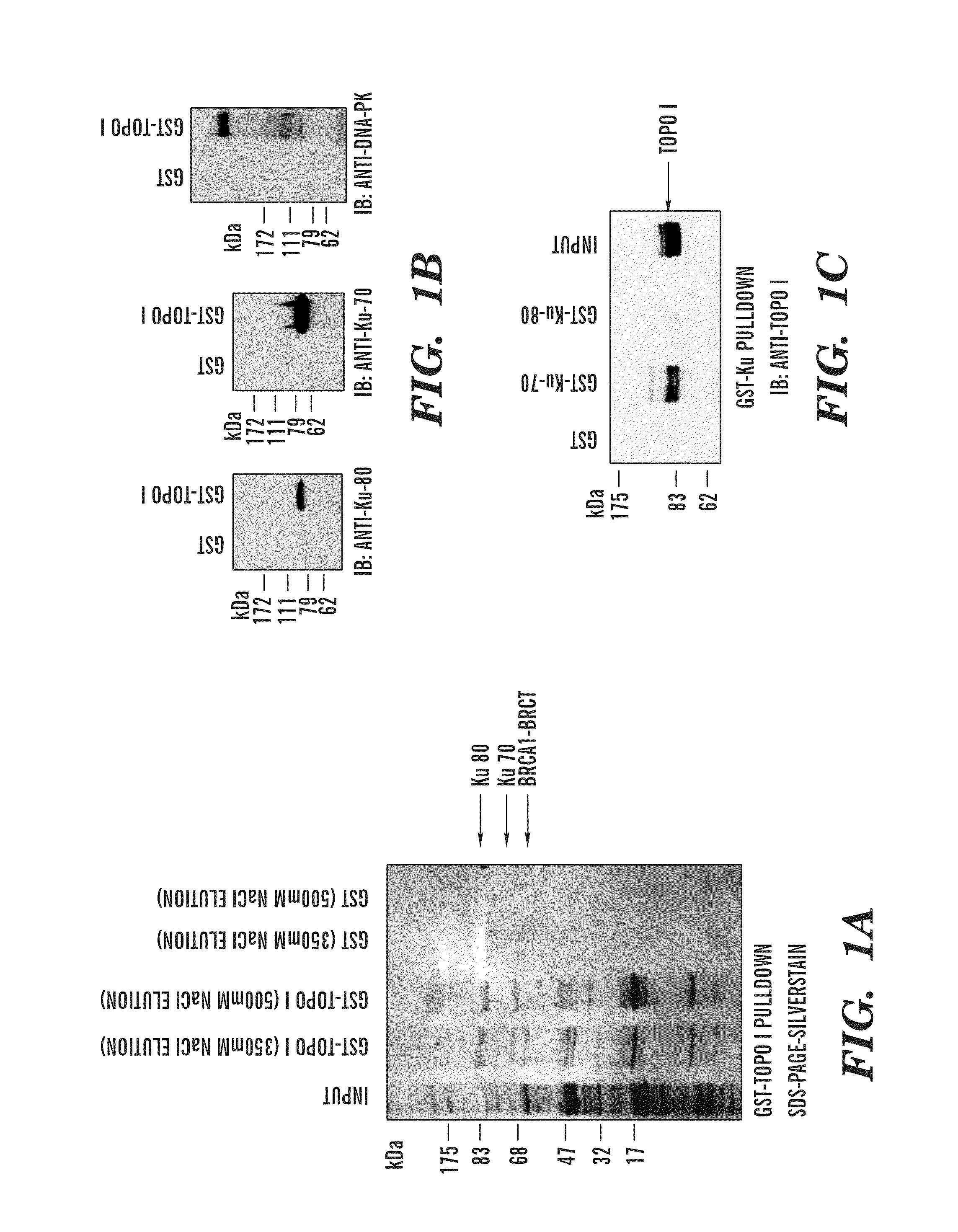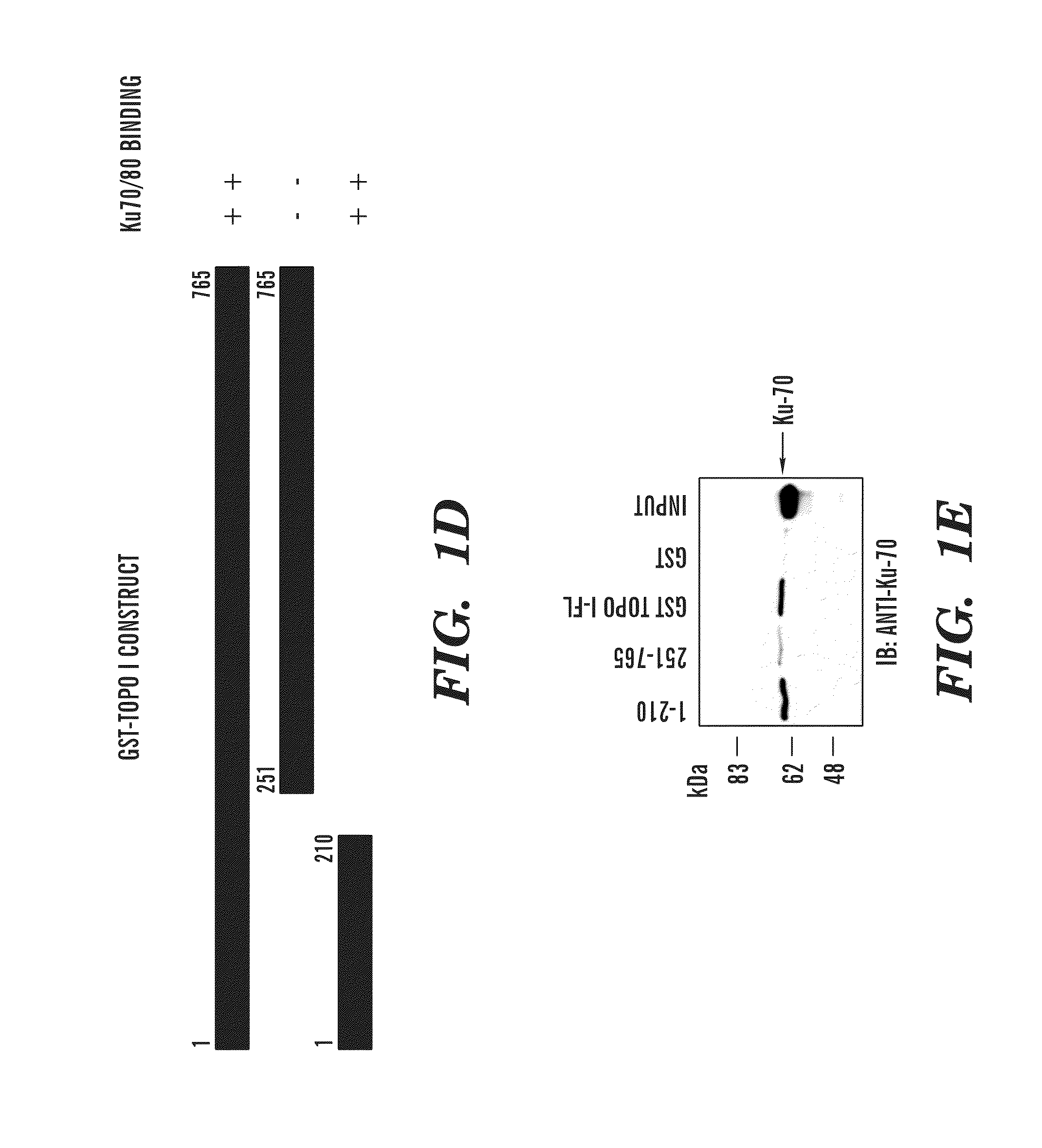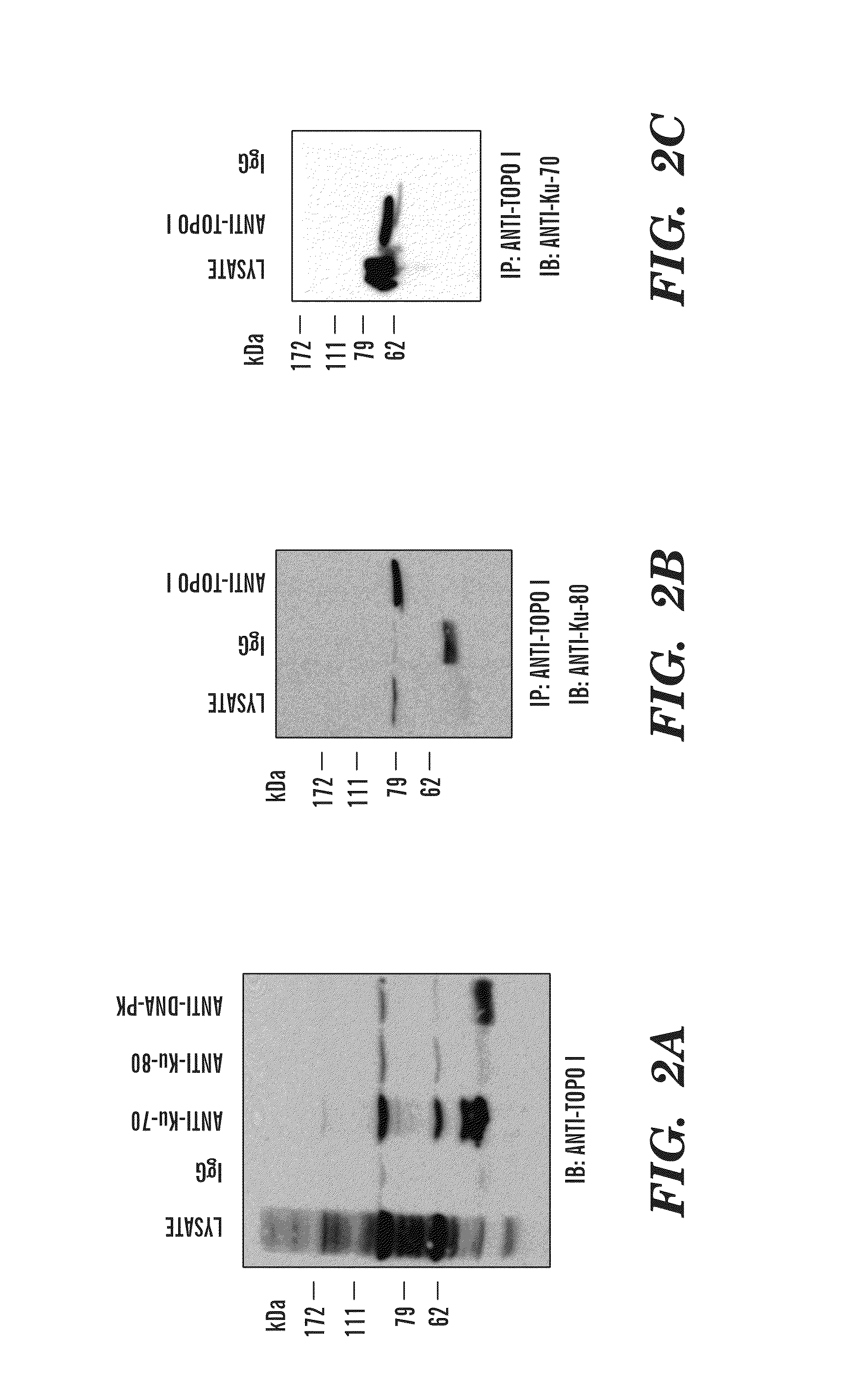Predictive marker for topoisomerase I inhibitors
a topoisomerase inhibitor and marker technology, applied in the field of cancer therapy and cancer prevention, can solve the problems of time-consuming, manual and cost-intensive, and individual subjects with the same histology do not respond identically, and achieve the effect of rapid topoi degradation
- Summary
- Abstract
- Description
- Claims
- Application Information
AI Technical Summary
Benefits of technology
Problems solved by technology
Method used
Image
Examples
example 1
[0411]Human topoisomerase I (topoI) is an essential and ubiquitous enzyme that is involved in various DNA transactions, and is a target of a class of anti-neoplastic drugs such as camptothecin (CPT) and CPT analogues such as topotecan and irinotecan, which are used in the clinic for the treatment of SCLC, colon and ovarian cancer and in several refractory cancers, including breast and cervical. However, like most cancer drugs, only 30% of patients respond to topo I inhibitors. Because the level of the topoI protein is high in most solid tumors, topo I levels can not be used as a predictive marker to determine efficacy of topo I inhibitors. The inventors have demonstrated herein that DNA-PK dependent phosphorylation of topoI initiates the ubiquitination of topo I and also BRCA1 is the E3 ligase. The inventors have discovered that the presence of phosphorylation at the serine 10 amino acid residue of topoI determines the rate of ubiquitination and degradation of topoI in the response ...
example 2
[0413]Topo I is Phosphorylated by DNA-PK at site S10. Analysis of the reaction product of topoI phosphorylation with DNA-PK by SDS-PAGE and autoradiography demonstrated that DNA-PK phosphorylates topoI in vitro. GST was not a substrate of DNA-PK. In the absence of topoI significant higher level of auto-phosphorylation of DNA-PK was also observed. Further analysis of phosphorylated topoI by mass spectrometry revealed that S10 of topoI is phosphorylated by DNA-PK. FIG. 3 shows that TopoI is phosphorylated on S10.
[0414]BRCA1 acts as an E3 Ubiquitin Ligase for TopoI, for which Phosphorylation is Required. In vitro experiments shown in FIG. 4 demonstrate that phosphorylation of topo I by DNA-PK up-regulates ubiquitination. The inventors investigated if BRCA1, a known E3 ubiquitin ligase could act as the E3 ubiquitin ligase for topo I. Immunoblot analysis of the product of in vitro topoI ubiquitination reaction showed ubiquitination of topo I by BRCA1. The inventors confirmed that ubiquit...
example 3
[0415]Down-Regulation of TopoI in Response to CPT is Mediated by DNA-PK and BRCA1.
[0416]Response to CPT has been shown to be linked to the ubiquitination and consequent down regulation of topoI (Desai et al., J Biol Chem.; 272(39):24159-64. 1997). The inventors demonstrated by the analysis of topo I levels of DNA-PK deficient and efficient cells in response to CPT, a significantly higher rate of topoI down-regulation in DNA-PK + / + cells. ScH8 cells treated with CPT showed a complete degradation of topoI at six hours however more than 50% topoI remained intact in ScSV3 cells, actin level remain similar in these cells. Using DNA relaxation assays of nuclear extract from these cells, the inventors demonstrated that there was no appreciable difference in topoI activity in these two cell lines (data not shown). The inventors also demonstrated that there was a similar level of the relative total topo I protein versus topo I mRNA levels in these cells. The inventors demonstrated a decrease...
PUM
| Property | Measurement | Unit |
|---|---|---|
| threshold | aaaaa | aaaaa |
| pH | aaaaa | aaaaa |
| pH | aaaaa | aaaaa |
Abstract
Description
Claims
Application Information
 Login to View More
Login to View More - R&D
- Intellectual Property
- Life Sciences
- Materials
- Tech Scout
- Unparalleled Data Quality
- Higher Quality Content
- 60% Fewer Hallucinations
Browse by: Latest US Patents, China's latest patents, Technical Efficacy Thesaurus, Application Domain, Technology Topic, Popular Technical Reports.
© 2025 PatSnap. All rights reserved.Legal|Privacy policy|Modern Slavery Act Transparency Statement|Sitemap|About US| Contact US: help@patsnap.com



